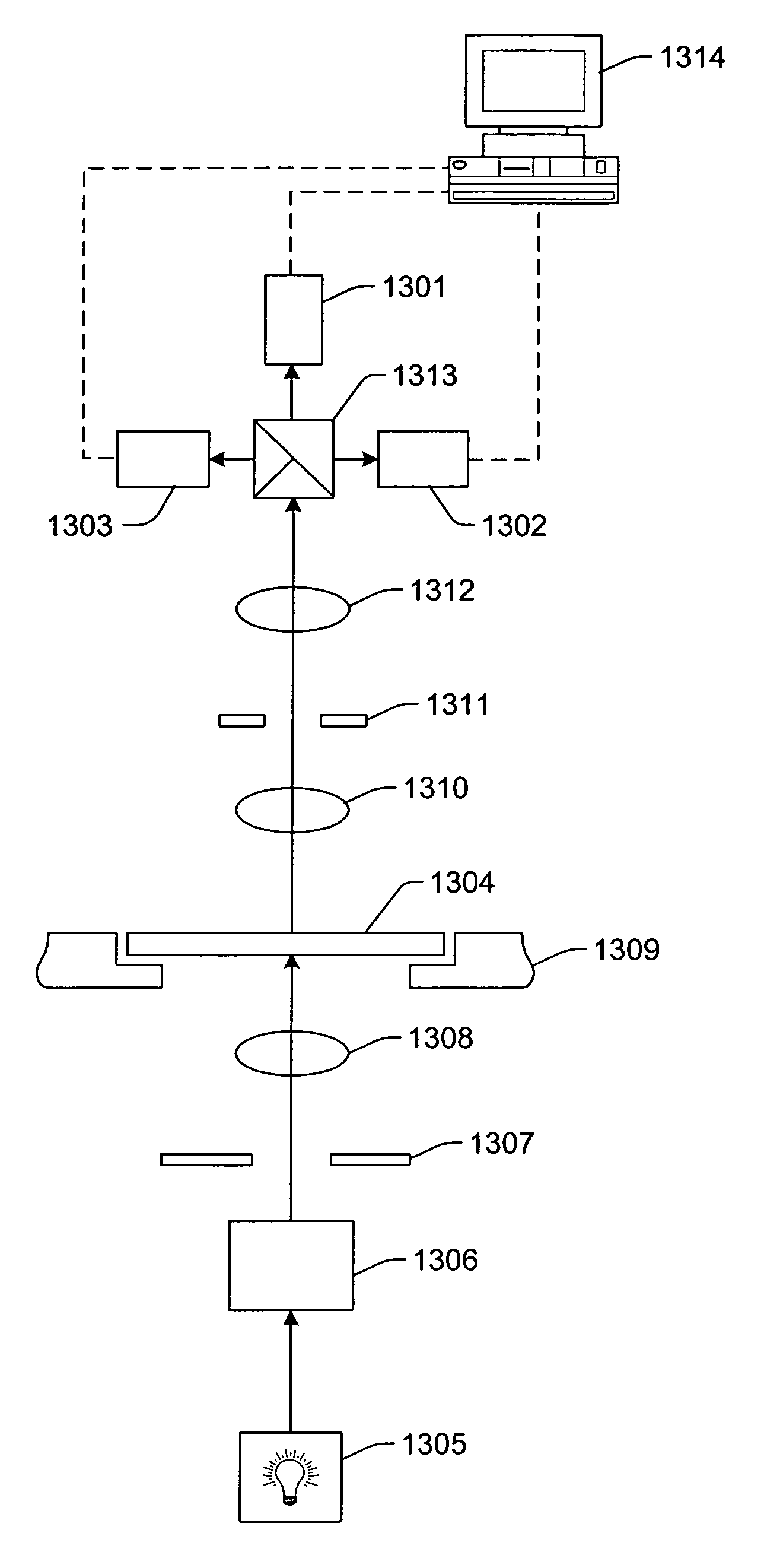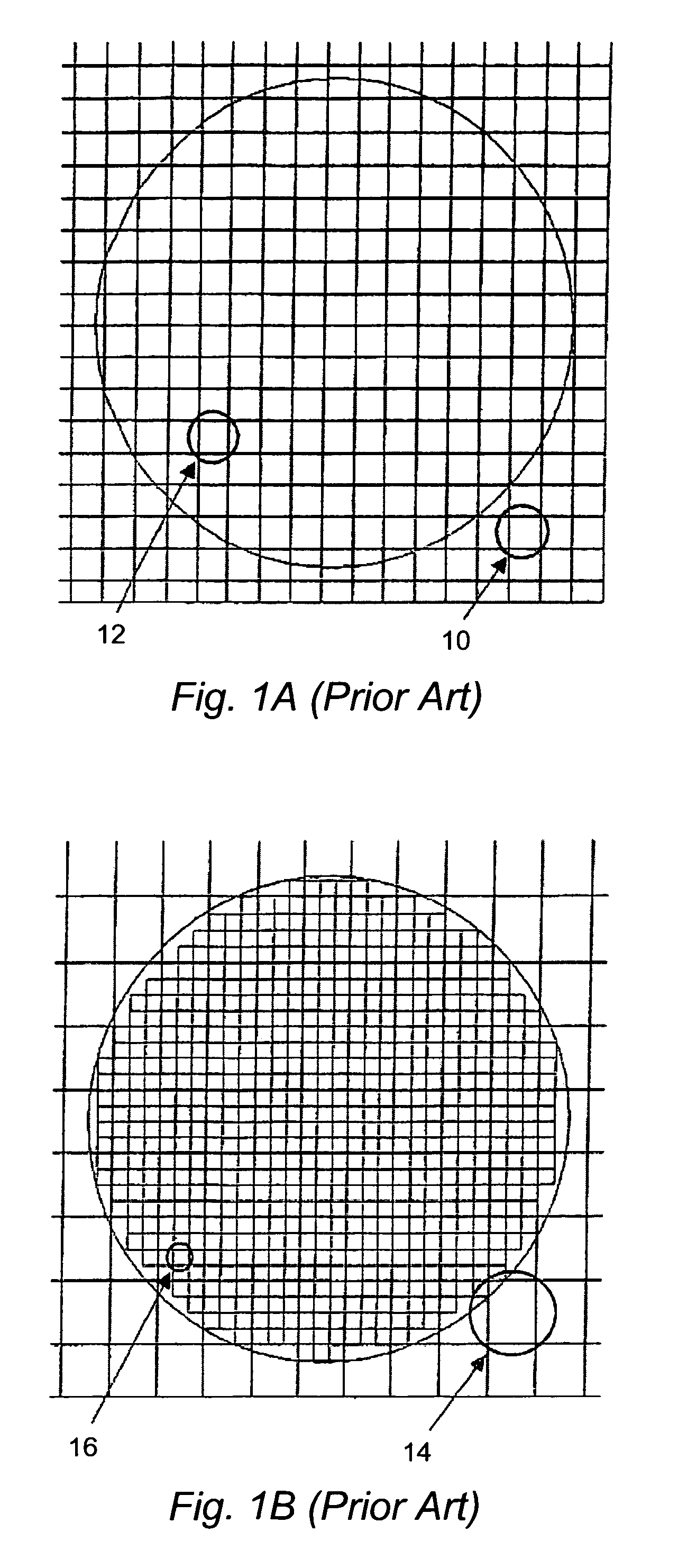Methods and systems for detecting defects in a reticle design pattern
a technology of reticle design and defect detection, applied in the direction of mechanical measurement arrangement, mechanical roughness/irregularity measurement, instruments, etc., can solve the problems of affecting yield, affecting yield, and more difficult reticles and consequently more expensive to manufactur
- Summary
- Abstract
- Description
- Claims
- Application Information
AI Technical Summary
Benefits of technology
Problems solved by technology
Method used
Image
Examples
Embodiment Construction
[0047]As used herein, the term “reticle” is used interchangeably with the term “mask.” In addition, the term “defect” is used interchangeably with the term “anomaly.”
[0048]A preferred embodiment implements modulation of focus of light illuminating reticles, each of which is used to expose by a step and repeat or a step and scan process a top layer of photoresist covering a test wafer. The reticles are printed on optimized film stacks, the type of optimization depending on the type of process level, which includes contact or via, gate, and trench. The base film stack is preferably a simple thermally grown or deposited stack of 1050X oxide covered by 320X SiON or any other base film stack known in the art. However, the reticles to be tested could also be printed on product wafers on which the “Process of Record” stack for the mask layer being tested is formed.
[0049]FIGS. 1A and 1B show, respectively, prior art single die reticle (exposure field 10 contains one unique die 12) and prior...
PUM
| Property | Measurement | Unit |
|---|---|---|
| heights | aaaaa | aaaaa |
| defects | aaaaa | aaaaa |
| heights | aaaaa | aaaaa |
Abstract
Description
Claims
Application Information
 Login to View More
Login to View More - R&D
- Intellectual Property
- Life Sciences
- Materials
- Tech Scout
- Unparalleled Data Quality
- Higher Quality Content
- 60% Fewer Hallucinations
Browse by: Latest US Patents, China's latest patents, Technical Efficacy Thesaurus, Application Domain, Technology Topic, Popular Technical Reports.
© 2025 PatSnap. All rights reserved.Legal|Privacy policy|Modern Slavery Act Transparency Statement|Sitemap|About US| Contact US: help@patsnap.com



